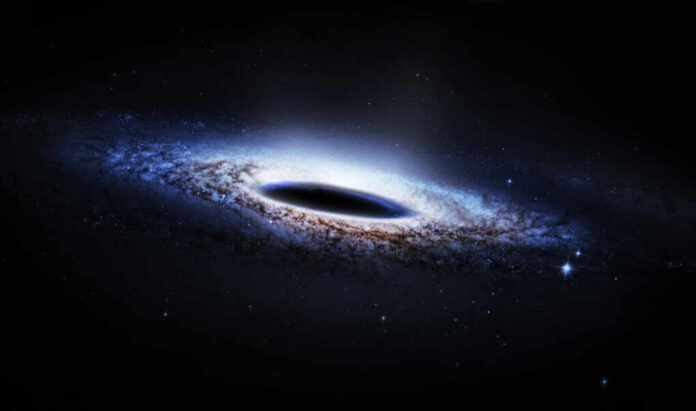
A stunning astronomical discovery challenges long-held beliefs about cosmic evolution, revealing that early supermassive black holes may be far smaller than previously thought.
Story Highlights
- Astronomers discover a supermassive black hole is 10 times smaller than previously estimated.
- This finding calls into question established models of black hole growth and cosmic evolution.
- First use of direct measurement via gas motion challenges previous indirect methods.
- Findings may require a revision of galaxy and black hole co-evolution models.
Revolutionary Discovery in Cosmic Science
Astronomers have made a groundbreaking discovery with the aid of the GRAVITY+ instrument at the European Southern Observatory’s Very Large Telescope. They observed the motion of gas surrounding a supermassive black hole in a distant early-universe galaxy, discovering that it is significantly smaller than current models predicted. This black hole, found in an ancient quasar, challenges the established beliefs regarding black hole growth and cosmic evolution, suggesting that previous estimates of black hole masses in the early universe might be unreliable.
The discovery, announced in September 2025, immediately prompted the scientific community to re-evaluate existing models of black hole size and growth rate. Led by Dr. Ric Davies from the Max Planck Institute for Extraterrestrial Physics, the research team has highlighted the importance of this finding, which marks the first direct measurement of black hole mass using gas motion. This approach offers a potentially more accurate method than the traditional indirect scaling laws that have informed our understanding until now.
Supermassive blackholes in the early universe are not as big as previously thought, say our scientists.
Their study found that a cosmic giant at the centre of an infant galaxy – some 12 billion lightyears away – was actually 10 times smaller than expected.
Find out more 👉… pic.twitter.com/A2zO3DRgqq
— University of Southampton (@unisouthampton) September 25, 2025
Implications for Cosmic Evolution Models
The implications of this discovery are profound, as it calls into question the reliability of mass estimation methods that have been widely used, particularly those involving the James Webb Space Telescope. This revelation might necessitate a revision of models explaining the co-evolution of galaxies and black holes. Existing models have assumed that supermassive black holes in the early universe were much larger, influencing theories about how these cosmic giants form and evolve alongside galaxies.
Experts believe this could lead to a significant shift in our understanding of cosmic history. Dr. Steven Finkelstein has noted that this evidence adds to the growing body of work suggesting early black holes either grew much faster than previously believed or started out far more massive than models predict. This has opened up discussions on alternative formation scenarios, such as the direct collapse of massive gas clouds or the existence of primordial black holes.
Broader Impact on Astrophysical Research
The discovery’s impact extends beyond just theoretical models. It might influence future funding priorities for telescope projects and research grants, as the astronomical community seeks to further understand these phenomena. The revelation that early black holes may have been overestimated in size will likely prompt a reanalysis of data from telescopes like the James Webb and Hubble, potentially leading to new insights and discoveries.
The ongoing scrutiny of scaling laws and indirect measurement techniques continues as researchers work to confirm the generalizability of this new method. While some remain skeptical, the need for more direct measurements across a larger sample of early-universe black holes is clear, emphasizing the importance of continued innovation and exploration in the field of astrophysics.
Sources:
University of Southampton news release (September 2025)
ZME Science coverage of early black hole discoveries
Rude Baguette report on anomalous black hole growth
AOL article summarizing the new discovery

























